Blog
Introduction to the Open Exhibits Site
 Welcome to the latest incarnation of the Open Exhibits website. We've added a bunch of new features to help you, the Open Exhibits community, contribute to the future of computer interactives. And since this is a community-driven website, I'll walk you through a few ways you can help build the community.
Welcome to the latest incarnation of the Open Exhibits website. We've added a bunch of new features to help you, the Open Exhibits community, contribute to the future of computer interactives. And since this is a community-driven website, I'll walk you through a few ways you can help build the community.
You can start by filling out your profile. This information will help us determine whether or not you qualify for the free Open Exhibits Core software. It's important to fill out correct information here as other members will connect with you through your profile. You can find other members to connect with via the member directory. This is a great way to see who's active on Open Exhibits. You can sort members by community contributions, join date and name. Or you can search for someone by their email address, organization, or the role they play at their organization.
If you are a developer, or interested in learning how to build your own multitouch exhibits, take a look at the Software page to begin exploring the available Modules and Templates. All of the modules released on this website are free to modify or use. Most modules require access to Adobe Flash, Open Exhibits Core, or GestureWorks. If you think you qualify for Open Exhibits Core, submit a request on your profile page. Commercial developers who are ineligible for Core can download and use all of the Open Exhibits modules and templates by purchasing a copy of GestureWorks.
Each module has its own summary page, documentation and support page. From these pages, you can track updates, download new releases, seek support from the module author(s), or branch out and create your own version. If you're interested in creating your own software to distribute on Open Exhibits, click the "Upload" or "Share" button on your profile page.
Looking for other ways to contribute? The Research and Design section of this website is a dynamic multiuser blog. It allows you to author articles with embedded media such as videos, images, and text documents. We make it very easy to comment on, favorite, and share Research and Design across your social network. Want to do more? Help out by evaluating the findings of our recent survey on the use of computer-based exhibits in museums, or take this year's survey.
The Tutorial and Support pages are your best resources as you delve into Open Exhibits-based software. Tutorials and screencasts will help you get started quickly, while the OE Core manual, API documentation, and Gesture Library page give deeper insight into creating multitouch applications with Open Exhibts. As the site grows, these resources will grow with it.
Look forward to more exciting features in the future. And don't worry, I'll be sure to post updates with helpful information concerning how to use them.
Questions? Contact me directly, or comment on this article.
Open Exhibits and Ideum Exhibit Booth at AAM Expo May 22-25, 2011
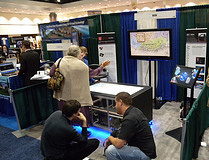 American Association of Museums Expo 2011
American Association of Museums Expo 2011
May 22-25, 2011
“The Museum of the Future” is the theme for the 105th AAM Annual Meeting & MuseumExpo™ in Houston, where "the ambitions are big and the ideas are bolder." Open Exhibits and Ideum will share a exhibit booth and show demonstrations of Open Exhibits-developed projects.
Links We Liked: Android 2.3, What Your Phone Says About You, Offline P2P and more!
 We pondered what our smartphones say about us, we imagined a future filled with screens that aren't just used for advertising, we're coveting this Archos tablet, we admired this
We pondered what our smartphones say about us, we imagined a future filled with screens that aren't just used for advertising, we're coveting this Archos tablet, we admired this content management system that lets you "pass" content between devices, we cheered MIT's Open Access policy, we're building our own offline physical P2P system and turning all the faucets in the office into drinking fountains with this $5 device, we're pretty sure that Windows as we know it must die, we will give a cookie to anyone who builds us a wireless router in an old NES cartridge, and we heard through the grapevine that Android Gingerbread (2.3) will be out Nov. 11.
Simple Mobile: Incorporating QR Codes Into a Museum Exhibit
Reposted from Ideum
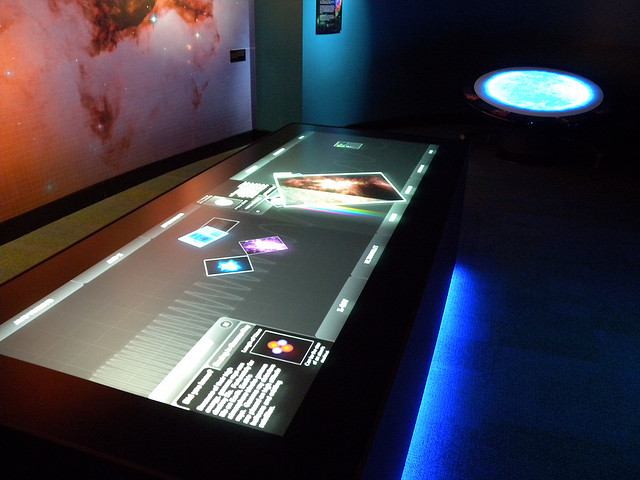 This week, we put together a quick test using QR Codes to extend a multitouch exhibit that we developed last year. QR Codes are an easy way to incorporate a mobile exhibit component that allows visitors to view and share more information about exhibit objects or media items. Any user with a smartphone can use a barcode scanning app to scan a QR code, which can then navigate to websites, source materials, teacher guides, commenting; basically, the possibilities are endless. Users can also choose to share the link with friends via social networking sites or email.
This week, we put together a quick test using QR Codes to extend a multitouch exhibit that we developed last year. QR Codes are an easy way to incorporate a mobile exhibit component that allows visitors to view and share more information about exhibit objects or media items. Any user with a smartphone can use a barcode scanning app to scan a QR code, which can then navigate to websites, source materials, teacher guides, commenting; basically, the possibilities are endless. Users can also choose to share the link with friends via social networking sites or email.
We reworked the EM Spectrum multitouch, multiuser exhibit that we developed with Adventure Science Center last year to include QR codes with links to Wikipedia entries for each area of the spectrum. Check out the video below to see the updated EM spectrum exhibit.
This experiment has proved useful enough that we've decided to add a QR Code generator to our Open Exhibits software modules. You'll be able try these for yourself when the redesigned Open Exhibits site launches and the software is released on November 15th!
A Smart Choice for Exhibit Design: Smart Strips
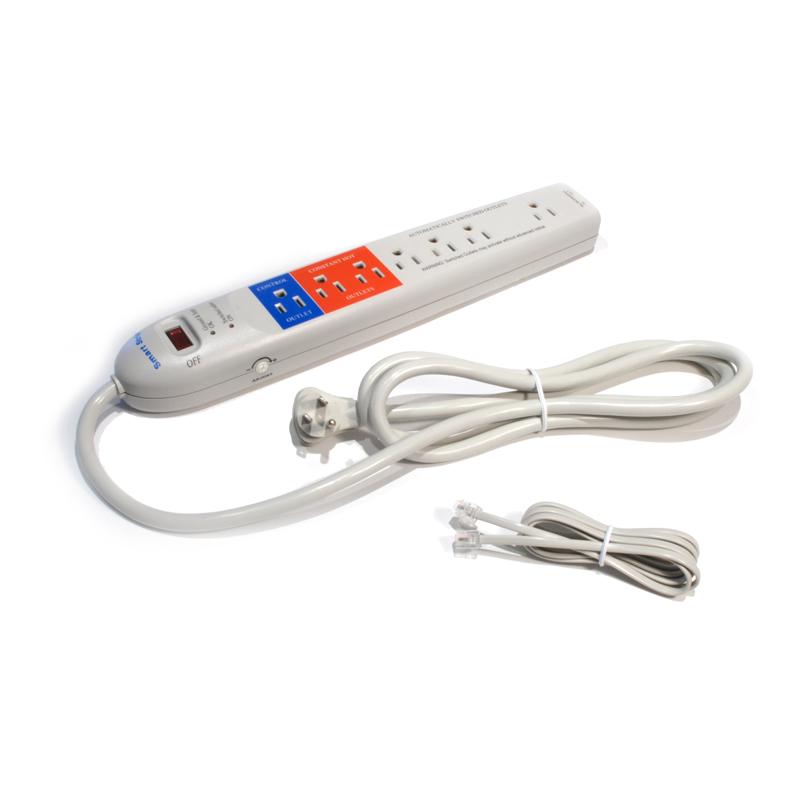 We've written before about some good ways to make your museum exhibit greener and I'd like to offer a few specifics on a type of device mentioned in that post: smart power strips. Not quite the intelligence level of Skynet, but some of them offer very cool features that almost anyone (with basic computer knowledge) can take advantage of.
We've written before about some good ways to make your museum exhibit greener and I'd like to offer a few specifics on a type of device mentioned in that post: smart power strips. Not quite the intelligence level of Skynet, but some of them offer very cool features that almost anyone (with basic computer knowledge) can take advantage of.
How 'smart' are these devices? Let's have a look at a few we've come across and tested in the lab.
The original Smart Strip, by Bits Limited, is a relay-based power strip that controls a number of outlets by monitoring the voltage on a main outlet. Once the 'control' device is powered on, the slave outlets become active. This is very handy when you have a computer that controls other devices, such as monitors, projectors, printers, etc.. The downside: voltage differences in different locations. The Smart Strip has a small adjusting switch to change the threshold at which the controlled outlets will turn on. Not every building's voltage on a given circuit will continuously stay the same. A small difference of 1 or 2 volts can make this device a pain instead of a boon. If you happen to be running your George Foreman grill cooking up some goodness on a plug down the way, your monitor may not turn on when your computer powers up. While not a huge hassle, this can turn into a big problem in certain situations where powering a device on at the right time is very important.
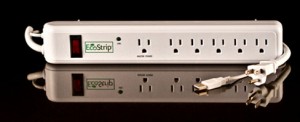
USB-controlled power strips, like the Ecostrip 2.0, could be the answer to your power saving/controlling needs if you run into dodgy voltage issues. This power strip claims to turn on the controlled outlets when power is applied to the computer. While this is true to a degree, it's not completely true. Most motherboards these days enter an S5 power state when they are 'powered off.' While in S5, these boards still provide power to certain things like a network card (so it can respond to Wake-on-Lan commands), modems, keyboards (via PS/2), and yes... USB. As an out of the box solution, this may not be the strip to use.
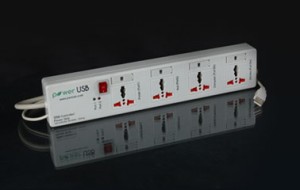
A programmable smart strip offers the most control over your devices. Enter Power USB. We were able to get one of these devices to try out in the lab. This strip looks much like the EcoStrip, but packs an interesting punch. Power USB can be controlled by a small application in Windows, and also has a command line tool that can be implemented into startup/shutdown scripts within Windows. These tools are used to switch 2 of the strips 4 outlets on or off. Power USB also offers their software API, so if you've got some C++ knowledge, you can whip up your own tool to control the 2 outlets on the strip. These devices offer different types of control over electronics.
